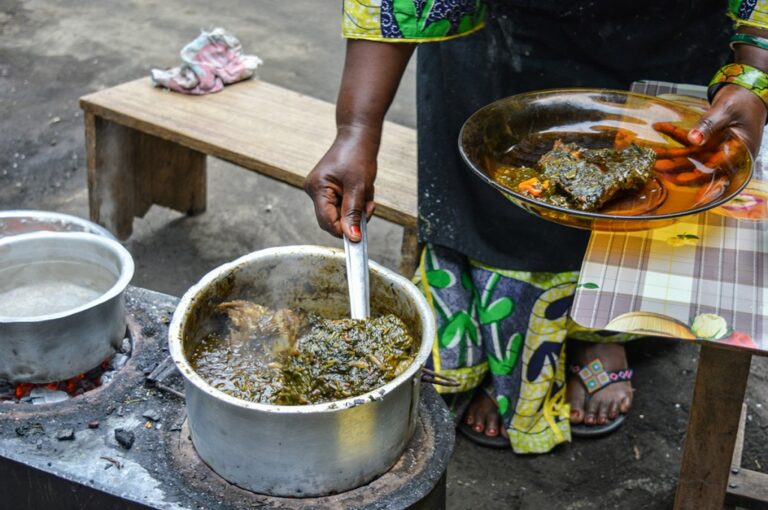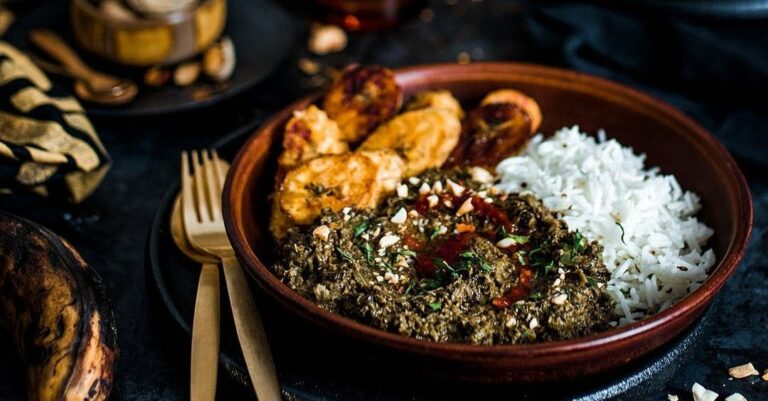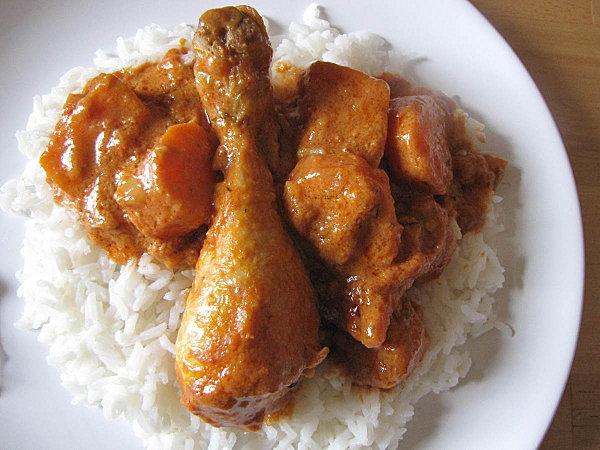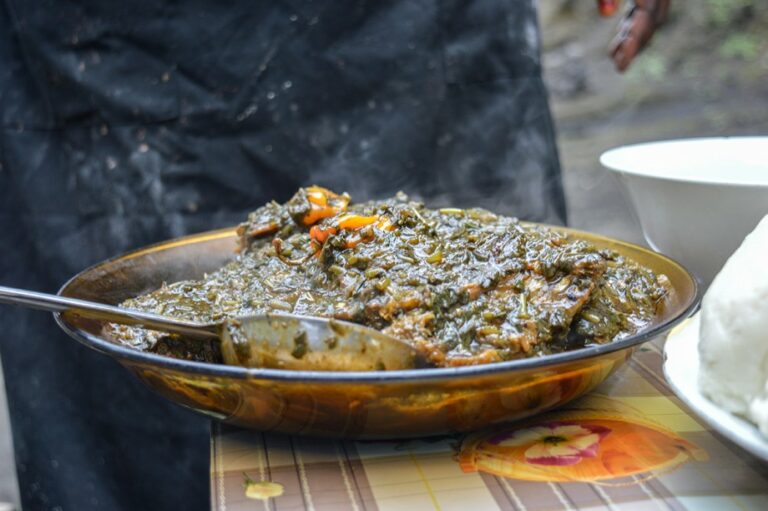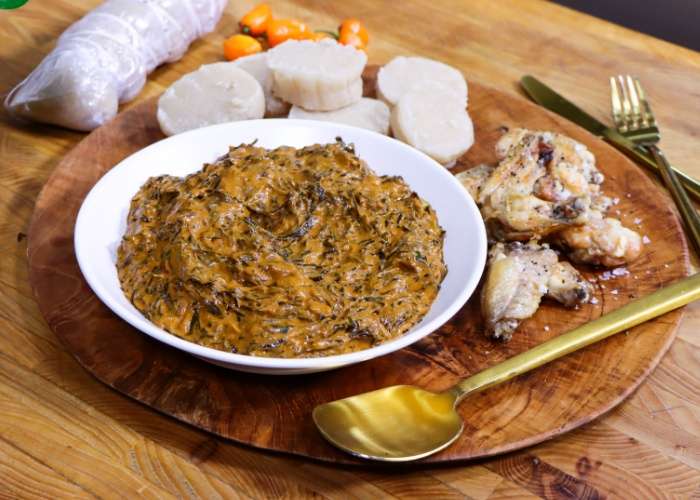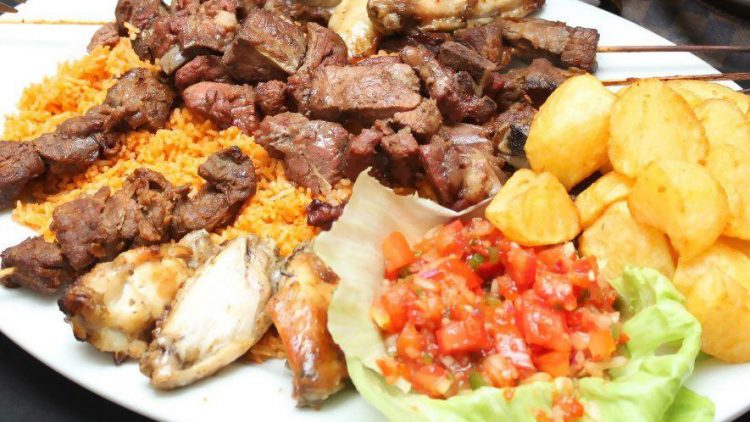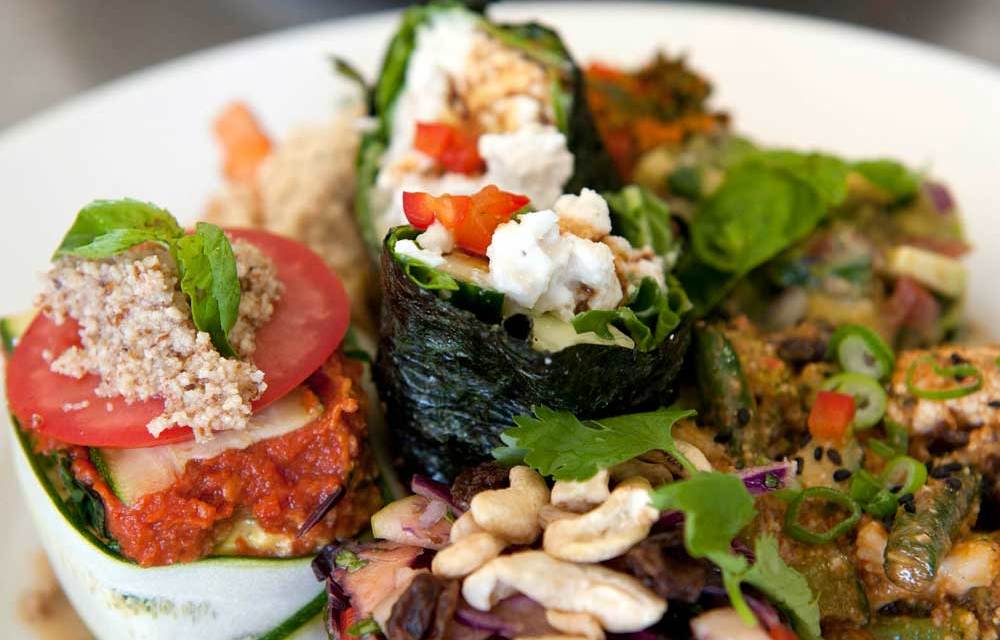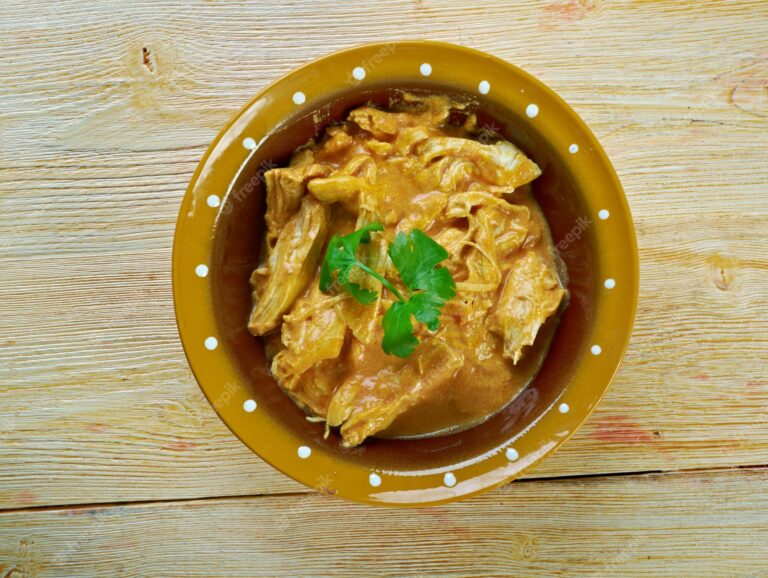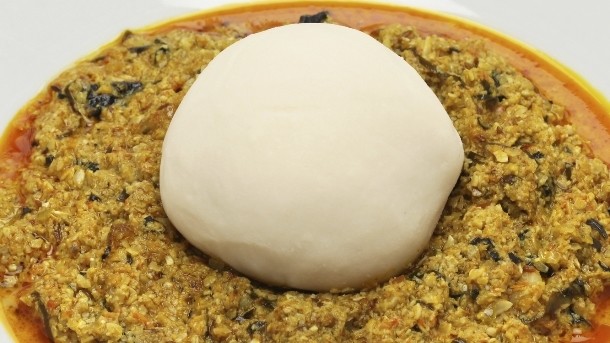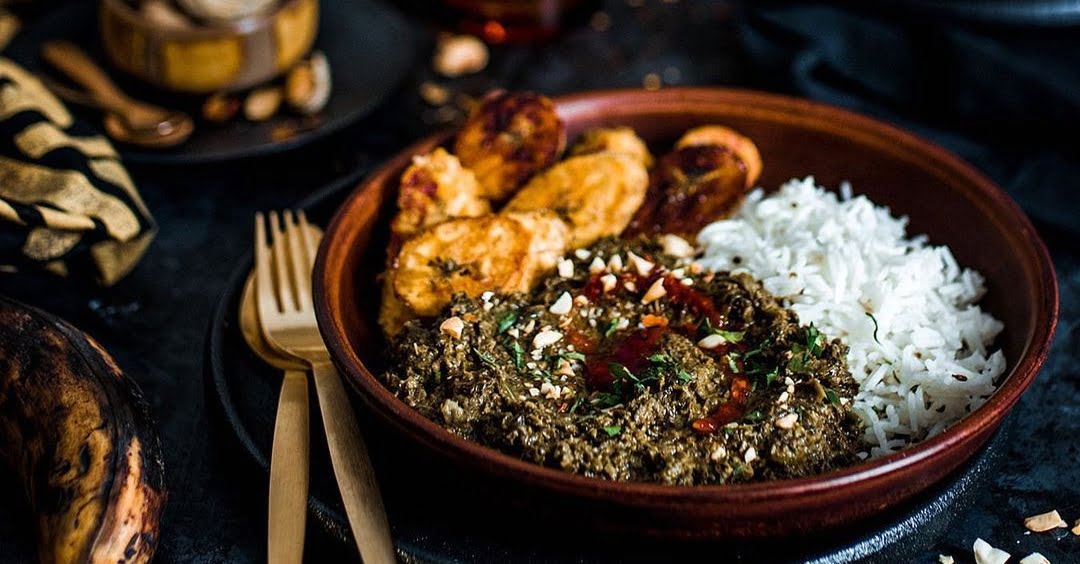Introduction: Congolese Cuisine
The Democratic Republic of Congo is a country located in Central Africa with a rich and diverse culinary heritage. The country’s cuisine is influenced by its history and cultural diversity, with influences from the neighboring countries such as Uganda, Rwanda, and Burundi. The cuisine is characterized by the use of local ingredients such as cassava, plantains, yams, and various types of meats and seafood.
1. Fufu and Eru
Fufu is a popular staple food in the Democratic Republic of Congo, made from cassava or plantain flour. The flour is mixed with water to form a dough, which is then boiled and mashed to create a starchy and dense dish. Fufu is often served with Eru, a stew made from spinach, palm oil, and a variety of meats such as chicken or fish. The dish is often eaten with bare hands and is a common meal in the country.
2. Cassava Leaves Stew
Cassava leaves stew, also known as “Saka Saka,” is a dish that is popular in the Congolese cuisine. The stew is made from cassava leaves, which are washed, then pounded and cooked with onions, garlic, and tomatoes. The dish is often served with rice or fufu, and can be made with different types of meats such as fish, chicken, or beef.
3. Kwanga
Kwanga is a dish made from cassava flour, which is mixed with water and left to ferment for a few days. The fermented dough is then wrapped in banana leaves and steamed to form a dense, bread-like dish. Kwanga is often served with fish or meat stews, and is a popular snack or meal in the Democratic Republic of Congo.
4. Moambe Chicken
Moambe chicken is a dish that is popular in the Congolese cuisine, and is made from chicken cooked in a sauce made from palm nuts. The sauce is made by boiling the palm nuts, then grinding and mixing them with spices, onions, and tomatoes. The chicken is then added to the sauce and cooked until tender. Moambe chicken is often served with rice or fufu, and is a flavorful and filling meal.
5. Pondu
Pondu is a dish made from cassava leaves, which are pounded and cooked with onions, garlic, tomatoes, and peanut butter. The dish is often served with fish or chicken, and is a staple meal in the Congolese cuisine. Pondu is rich in vitamins and minerals, and is a nutritious dish that is enjoyed by many in the country.
6. Liboke
Liboke is a dish that is popular in the Congolese cuisine, and is made from fish or meat cooked in banana leaves. The fish or meat is marinated in a mixture of spices, onions, and tomatoes, and is then wrapped in banana leaves and cooked over an open flame. Liboke is often served with fufu or rice, and is a flavorful and aromatic dish.
7. Maboke
Maboke is a dish that is popular in the Democratic Republic of Congo, and is made from fish cooked with spices, onions, and tomatoes in a leaf called maboke. The maboke leaf is a type of leaf that is endemic to the country, and is used to wrap the fish before it is cooked. The dish is often served with fufu or rice, and is a unique and flavorful meal.
Conclusion: Delicious and Unique Congolese Dishes
The Democratic Republic of Congo has a diverse and flavorful cuisine, with a range of dishes that are worth trying. From fufu and eru to maboke and liboke, the country’s cuisine is characterized by the use of local ingredients and aromatic spices. These dishes are not only delicious, but also unique and reflective of the country’s rich cultural heritage. If you get the chance to try Congolese cuisine, don’t hesitate to indulge in these mouth-watering dishes.

